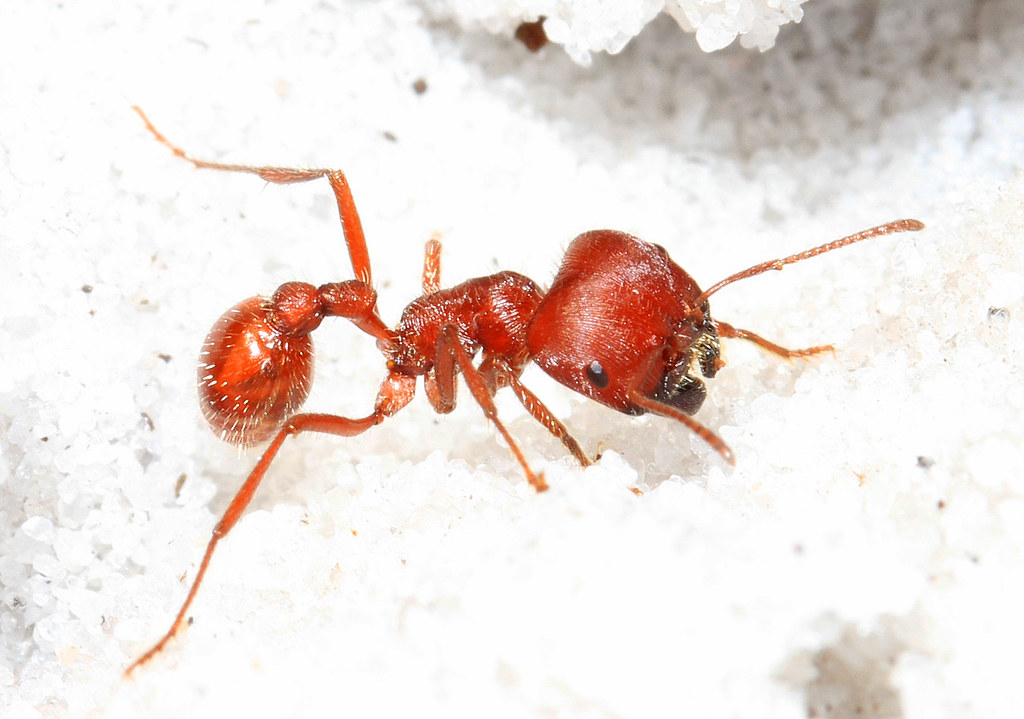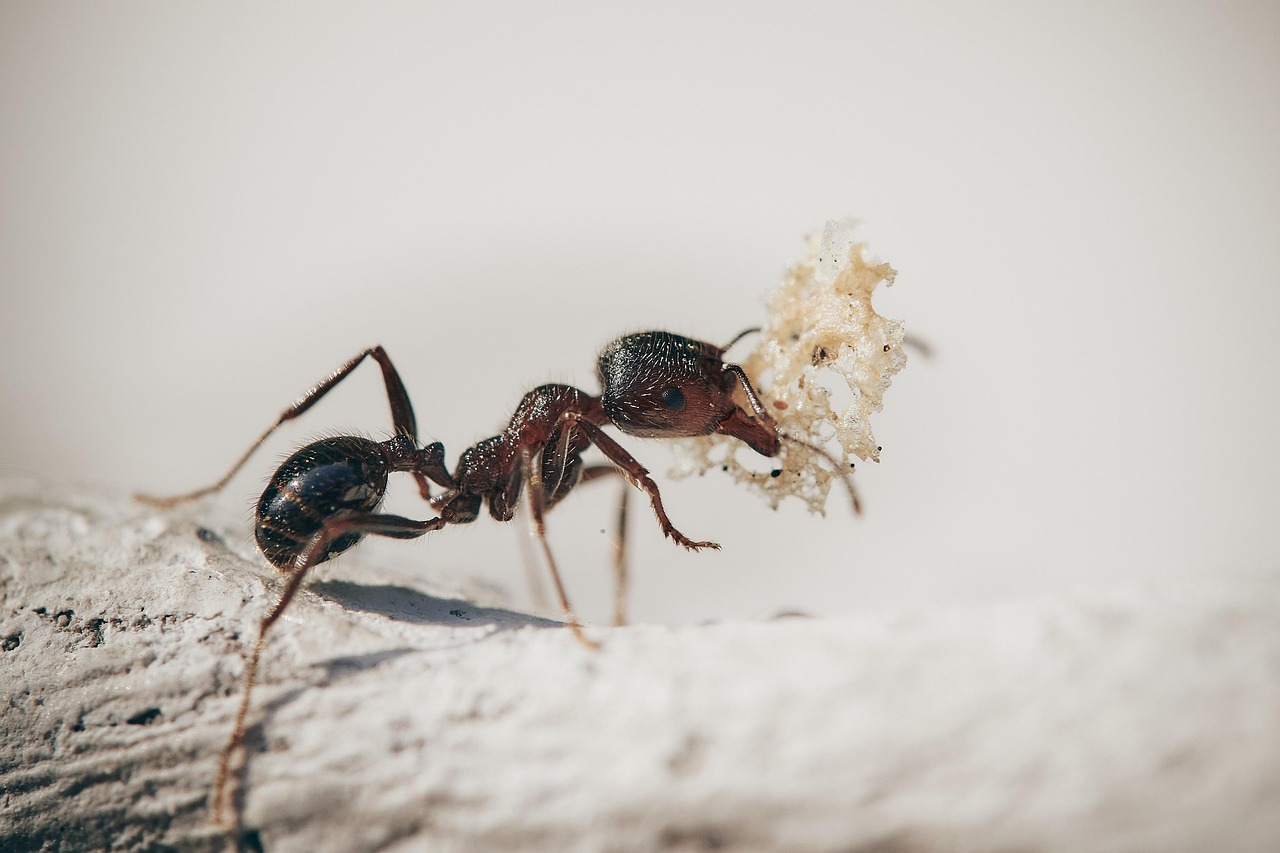Picture this: a tiny ant, no bigger than your fingernail, carrying a chemical weapon that could revolutionize how we treat one of humanity’s most persistent health challenges. While millions of people worldwide wake up each morning with stiff, aching joints, scientists are increasingly turning their attention to the miniature warriors of the insect world. These creatures have been perfecting their biochemical arsenal for over 100 million years, and now researchers believe they might hold the key to unlocking new treatments for arthritis.
The Surprising Science Behind Ant Venom

Ant venom isn’t just a simple irritant designed to cause pain. It’s a complex cocktail of proteins, peptides, and alkaloids that have evolved to be incredibly specific and effective. Each species of ant produces its own unique blend, with some containing over 100 different compounds working in harmony. The formic acid that makes ant bites sting is just the tip of the iceberg. Deep within their venom sacs, ants carry sophisticated molecules that can target specific cellular pathways in ways that modern medicine is only beginning to understand. These compounds are so precise that they can interact with individual receptors on human cells, potentially offering therapeutic benefits without the broad-spectrum side effects of traditional medications.
Why Arthritis Researchers Are Paying Attention
Arthritis affects over 350 million people globally, making it one of the leading causes of disability worldwide. Traditional treatments often come with significant side effects, from stomach ulcers to increased infection risk. This has driven researchers to explore unconventional sources for new therapies. The connection between ant venom and arthritis treatment stems from the anti-inflammatory properties found in certain compounds. Unlike synthetic drugs that often work by suppressing the entire immune system, ant venom components appear to target specific inflammatory pathways. This selective approach could potentially reduce joint pain and swelling while minimizing unwanted effects on other body systems. Recent studies have shown that some ant species produce compounds that can actually promote tissue repair and reduce the breakdown of cartilage that characterizes arthritis. This dual action – reducing inflammation while supporting healing – represents a significant advancement in treatment philosophy.
The Fire Ant Connection

Fire ants, despite their fearsome reputation, have become unexpected allies in medical research. Their venom contains a unique alkaloid called solenopsin, which has shown remarkable anti-inflammatory properties in laboratory studies. When researchers applied purified solenopsin to inflamed tissue samples, they observed a significant reduction in inflammatory markers. What makes fire ant venom particularly interesting is its ability to modulate the immune response rather than simply suppressing it. This means it could potentially help the body’s natural healing processes work more effectively. The compound appears to redirect inflammatory responses away from destructive pathways and toward repair mechanisms.
Harvester Ants and Their Medicinal Potential

Harvester ants produce some of the most potent venoms in the ant world, and their biochemical complexity is staggering. These ants have evolved venom that contains powerful phospholipase enzymes, which can break down cell membranes with surgical precision. While this sounds destructive, researchers have found that when used in controlled amounts, these enzymes can actually help reduce the thick, inflamed tissue that characterizes arthritic joints. Traditional healers in various cultures have long used harvester ant stings to treat joint pain, though the scientific understanding of why this works is relatively new. Modern analysis has revealed that harvester ant venom contains compounds that can increase blood flow to affected areas while simultaneously reducing inflammatory responses. This combination creates an environment where damaged tissue can heal more effectively.
The Molecular Mechanisms at Work

At the cellular level, ant venom compounds interact with specific receptors that control inflammatory responses. Some of these molecules can bind to receptors that normally trigger pain signals, effectively blocking them from reaching the brain. Others work by influencing the production of inflammatory chemicals like cytokines and prostaglandins. Perhaps most remarkably, certain ant venom peptides appear to stimulate the production of anti-inflammatory compounds within the body itself. Rather than simply masking symptoms, these natural chemicals could potentially help the body develop its own defense against chronic inflammation. This represents a fundamentally different approach to treatment than most current arthritis medications. The specificity of these interactions is what makes ant venom so promising. While traditional painkillers often affect multiple systems throughout the body, ant venom compounds can target very specific molecular pathways involved in arthritis progression.
Current Research Breakthroughs

A groundbreaking study published in 2024 by researchers at the University of Queensland demonstrated that synthetic versions of ant venom compounds could significantly reduce joint inflammation in laboratory models. The researchers found that animals treated with these compounds showed not only reduced pain responses but also measurable improvements in joint mobility and cartilage health. Another recent breakthrough came from scientists in Brazil, who discovered that certain compounds in leafcutter ant venom could actually stimulate the regeneration of damaged cartilage tissue. This finding challenges the long-held belief that cartilage damage from arthritis is irreversible. The implications for treatment are enormous, as it suggests that ant venom compounds might not just manage symptoms but potentially reverse some of the damage caused by arthritis. European researchers have also made significant strides in understanding how ant venom compounds can be modified to enhance their therapeutic effects while reducing any potential toxicity. Their work focuses on creating synthetic versions that maintain the beneficial properties while being safer for human use.
Traditional Uses Meet Modern Science
Indigenous communities around the world have used ant stings and ant-based preparations to treat joint pain for centuries. In parts of South America, traditional healers have long prescribed controlled exposure to certain ant species as a treatment for arthritis-like conditions. What was once dismissed as folk medicine is now being validated by rigorous scientific research. In China, some traditional medicine practitioners have incorporated ant extracts into topical treatments for joint pain. Modern analysis of these preparations has revealed that they contain many of the same active compounds that researchers are now studying in laboratory settings. This convergence of traditional knowledge and modern science is accelerating the development of new treatments.
The Challenge of Extraction and Purification

One of the biggest hurdles in developing ant venom-based treatments is obtaining sufficient quantities of pure compounds. A single ant produces only tiny amounts of venom, and extracting it without harming the insect is technically challenging. Researchers have had to develop innovative techniques to collect and concentrate these precious compounds. Some scientists are now working on synthetic production methods that could reproduce ant venom compounds in laboratory settings. This approach would not only solve the supply problem but also allow for precise control over the composition and concentration of therapeutic compounds. The development of these synthetic alternatives is crucial for making ant venom-based treatments viable for widespread use. Advanced purification techniques are also being developed to isolate specific beneficial compounds while removing potentially harmful components. This selective extraction is essential for creating safe, effective medications from complex natural venoms.
Safety Considerations and Clinical Trials
While the potential benefits of ant venom compounds are exciting, researchers are proceeding with appropriate caution. Any substance powerful enough to be therapeutically useful must be carefully tested for safety. Current research focuses on determining optimal dosages that provide benefits without causing adverse reactions. Early clinical trials are beginning to show promising results, with participants reporting reduced joint pain and improved mobility after treatment with purified ant venom compounds. However, these studies are still in their early stages, and more research is needed to fully understand both the benefits and risks. The challenge lies in harnessing the therapeutic potential while minimizing any negative effects. Regulatory agencies are taking a cautious but supportive approach to this research, recognizing both the potential benefits and the need for thorough safety testing. The development pathway for ant venom-based treatments will likely be similar to other novel pharmaceuticals, requiring extensive clinical trials before approval.
Potential Side Effects and Limitations
Despite the promising research, ant venom treatments are not without potential risks. Some individuals may be allergic to ant venom compounds, and researchers are working to identify markers that could predict these reactions. Additionally, the long-term effects of using ant venom-based treatments are still unknown, as most studies have focused on short-term outcomes. Another limitation is that ant venom compounds may not be effective for all types of arthritis. Different forms of the disease involve different inflammatory pathways, and what works for one type might not work for another. Researchers are investigating which specific conditions might benefit most from ant venom-based treatments. The cost of developing and producing these treatments could also be significant, potentially limiting access for some patients. However, as production methods improve and scale up, costs are expected to decrease.
The Future of Ant Venom Medicine

The field of ant venom research is expanding rapidly, with new discoveries emerging regularly. Scientists are now investigating venom compounds from dozens of different ant species, each potentially offering unique therapeutic benefits. Some researchers predict that within the next decade, we could see the first ant venom-based medications approved for human use. Advanced techniques like genetic engineering are being explored to produce ant venom compounds more efficiently. Scientists are working on inserting the genes responsible for producing these compounds into bacteria or yeast, which could then manufacture the therapeutic molecules in large quantities. This biotechnological approach could make ant venom treatments more accessible and affordable. The potential applications extend beyond arthritis as well. Researchers are investigating whether ant venom compounds could be useful for treating other inflammatory conditions, from autoimmune diseases to certain types of cancer. The versatility of these natural compounds continues to surprise scientists.
Environmental and Ethical Considerations
As interest in ant venom compounds grows, researchers are carefully considering the environmental impact of their work. Harvesting venom from wild ant populations could potentially harm ecosystems, so sustainable collection methods are being developed. Some research groups are establishing ant colonies specifically for venom production, ensuring that wild populations remain undisturbed. The ethical implications of using ant venom are also being discussed within the scientific community. While ants are not generally considered to have the same ethical protections as mammals, researchers are still working to minimize any potential suffering during venom collection. The development of synthetic alternatives addresses many of these concerns. There’s also the question of benefit-sharing with indigenous communities who have traditional knowledge about ant-based treatments. Researchers are working to ensure that these communities are appropriately recognized and compensated for their contributions to modern medicine.
What This Means for Arthritis Patients

For the millions of people living with arthritis, ant venom research offers genuine hope for better treatments. While current therapies often provide only partial relief and come with significant side effects, ant venom compounds could potentially offer more targeted, effective treatment options. The possibility of actually reversing some arthritis damage, rather than just managing symptoms, represents a major breakthrough. However, patients should understand that these treatments are still in development and not yet available for general use. The research is promising, but it will likely be several years before ant venom-based therapies become available through conventional medical channels. In the meantime, patients should continue working with their healthcare providers to manage their condition using currently available treatments. The development of ant venom treatments also highlights the importance of biodiversity conservation. Many of the species being studied for their medicinal properties are found in threatened habitats, and protecting these environments is crucial for continued medical research.
The Broader Impact on Natural Medicine
![The Broader Impact on Natural Medicine (image credits: By fir0002 flagstaffotos [at] gmail.com
Canon 20D + Sigma 150mm f/2.8, GFDL 1.2, https://commons.wikimedia.org/w/index.php?curid=1499681)](https://insecthive.com/wp-content/uploads/2025/07/1751884773431_Meat_eater_ant_feeding_on_honey02.jpg)
Canon 20D + Sigma 150mm f/2.8, GFDL 1.2, https://commons.wikimedia.org/w/index.php?curid=1499681)
The success of ant venom research is part of a broader renaissance in natural medicine research. Scientists are increasingly recognizing that nature has had millions of years to develop sophisticated biochemical solutions to biological problems. This shift in perspective is leading to new discoveries across many fields of medicine. The techniques being developed to study ant venom are also being applied to research on other natural compounds. Advanced analytical methods that can identify and isolate specific molecules from complex mixtures are opening up new possibilities for drug discovery. This technological advancement is accelerating the pace of natural medicine research across the board. The integration of traditional knowledge with modern scientific methods, as seen in ant venom research, is becoming a model for other areas of medical research. This collaborative approach is proving to be more effective than either traditional or modern methods alone.
Conclusion

The journey from ant sting to arthritis treatment represents one of the most fascinating developments in modern medicine. While we’re still in the early stages of understanding how these tiny creatures’ chemical weapons might be transformed into healing tools, the research is advancing rapidly. The idea that relief for millions of arthritis sufferers might come from something as small as an ant’s venom sac shows us just how much we still have to learn from the natural world. As scientists continue to unlock the secrets of ant venom, we’re reminded that sometimes the most powerful solutions come in the smallest packages. What other medical breakthroughs might be crawling around right under our feet?

